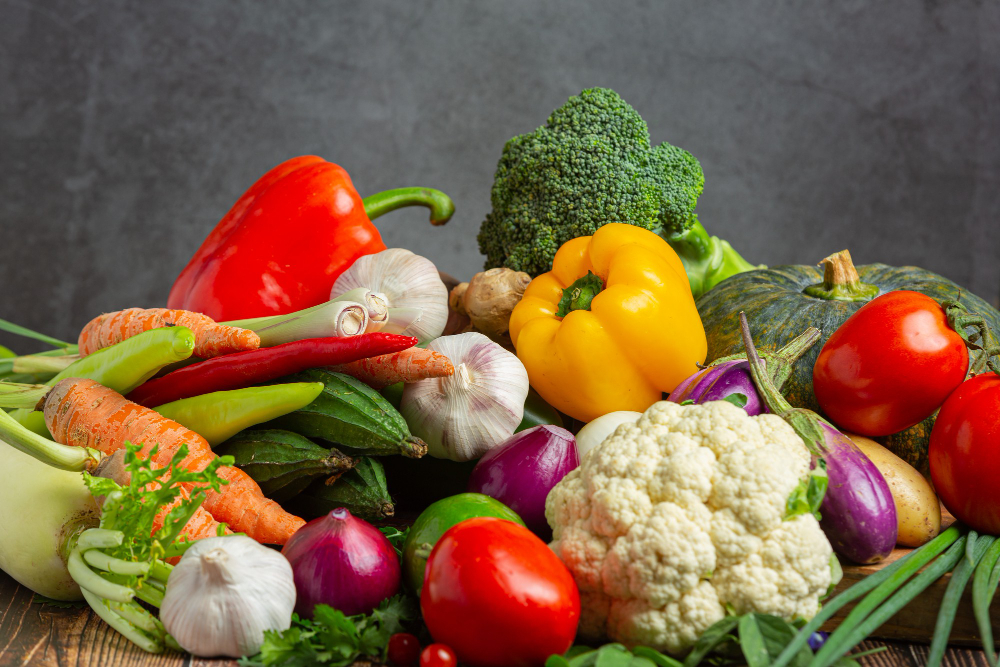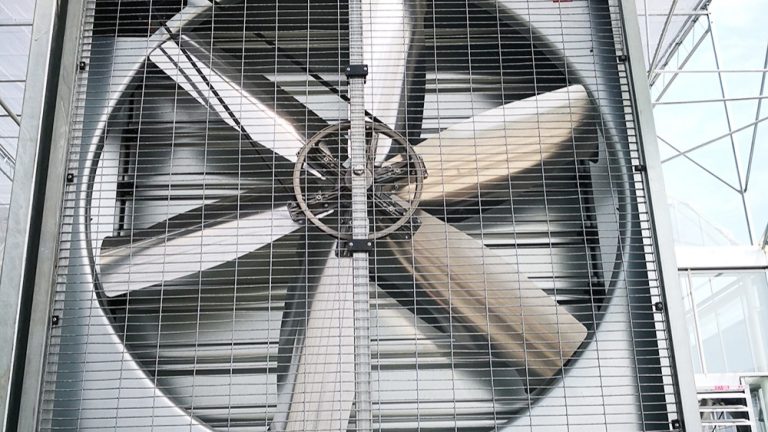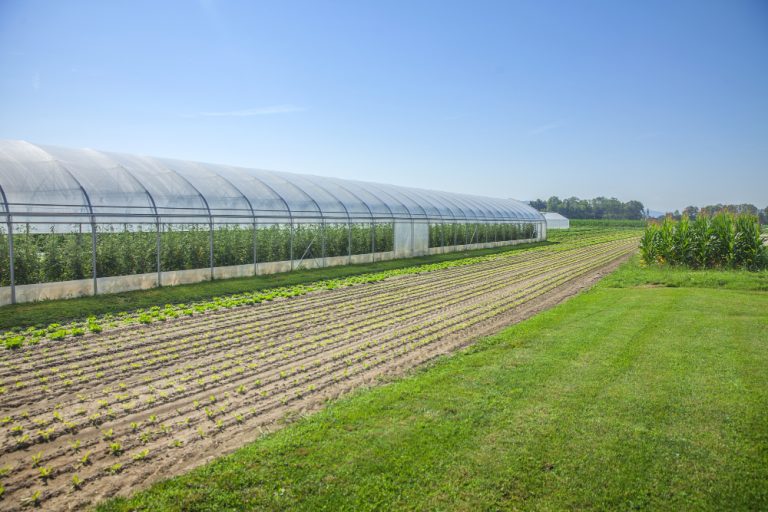
Key Points
- Research suggests that exotic vegetables like broccoli, asparagus, and lettuce can be grown in polyhouses in India, offering controlled environments for non-native crops.
- It seems likely that vegetables such as zucchini, bell peppers, and kale are also suitable, given their popularity in polyhouse farming for year-round cultivation.
- The evidence leans toward polyhouses enabling the growth of less common vegetables like artichokes and purple carrots, though success depends on specific climate control.
Overview
Polyhouse farming in India provides a controlled environment that supports the cultivation of exotic vegetables, which are not traditionally grown or widely consumed in the region. These structures help maintain optimal temperature, humidity, and light, making it possible to grow crops that might otherwise struggle in India’s diverse climates. Below, we explore the types of exotic vegetables suitable for polyhouse cultivation and provide examples to illustrate their feasibility.
Suitable Exotic Vegetables
Exotic vegetables that can thrive in polyhouses include broccoli, asparagus, celery, lettuce (including iceberg and romaine varieties), zucchini, colored bell peppers (red, yellow, etc.), cherry tomatoes, parsley, baby corn, red cabbage, Brussels sprouts, basil, chives, dill, exotic mushrooms, kale, artichokes, fennel, and purple carrots. These vegetables are often imported or less common in Indian cuisine, making polyhouse farming a viable option for their production.
Benefits and Considerations
Polyhouses allow for year-round cultivation, reducing reliance on seasonal conditions and enabling farmers to meet growing demand for these vegetables, especially in urban and high-end markets. However, success depends on proper setup, including climate control systems, and market demand, as some exotic vegetables may have niche appeal.
Survey Note: Detailed Analysis of Exotic Vegetable Cultivation in Polyhouses in India
This section provides a comprehensive examination of exotic vegetable cultivation in polyhouses in India, expanding on the direct answer with detailed insights derived from extensive research. Polyhouse farming, a form of protected cultivation, utilizes structures covered with materials like polyethylene to create controlled environments, making it ideal for growing vegetables that are not native or commonly cultivated in India. These exotic vegetables, often introduced from regions like Europe, the Mediterranean, or Southeast Asia, are gaining popularity due to changing dietary preferences, particularly among urban and affluent consumers.
Definition and Context of Exotic Vegetables
Exotic vegetables are defined as those not traditionally grown or consumed in India, often imported and cultivated in controlled environments like polyhouses or net houses. Examples include broccoli, asparagus, and lettuce, which were historically less common but are now increasingly demanded in salads, international cuisines, and health-conscious diets. The distinction from common vegetables like tomatoes or potatoes, which are now staples, highlights the niche market for these crops.
Polyhouse Farming in India: Technical Overview
Polyhouses are framed structures covered with translucent materials, such as glass or polythene, designed to regulate temperature, humidity, and light. In India, they are popular due to their low cost and adaptability, with benefits including year-round cultivation, reduced pest incidence, and improved crop quality. The technology is particularly suited for high-value crops, including exotic vegetables, as it mitigates the challenges posed by India’s varied climates, from tropical south to temperate north.
List of Exotic Vegetables Suitable for Polyhouse Cultivation
Based on research from agricultural blogs, market analyses, and farming guides, the following exotic vegetables are identified as suitable for polyhouse cultivation in India:
- Leafy Greens and Salads: Lettuce (including iceberg, romaine, and red oakleaf varieties), kale, celery, parsley, basil, chives, and dill. These are often used in salads and international dishes, with lettuce and kale gaining traction in urban markets.
- Cruciferous Vegetables: Broccoli, Brussels sprouts, and red cabbage, known for their nutritional value and increasing popularity in health-focused diets.
- Fruiting Vegetables: Zucchini, colored bell peppers (red, yellow), cherry tomatoes, and baby corn, which are versatile for both raw consumption and cooking.
- Perennials and Herbs: Asparagus, artichokes, and fennel, which require specific conditions that polyhouses can provide, such as controlled temperatures for asparagus and humidity for fennel.
- Specialty and Colored Varieties: Purple carrots and exotic mushrooms (like oyster or shiitake), which add visual appeal and nutritional benefits, catering to niche markets.
Cultivation Practices and Regional Suitability
Cultivation in polyhouses involves sowing seeds or transplanting seedlings, with specific timing based on the vegetable. For instance, broccoli and kale are best sown in October-November for winter cultivation, while lettuce can be grown year-round with proper cooling systems. Regional suitability varies, with states like Maharashtra, Himachal Pradesh, and Karnataka leading in exotic vegetable production. Maharashtra, for example, grows half of India’s exotic vegetables, including asparagus and broccoli, in polyhouses, as noted in Farming of Exotic Vegetables – agrimate.org.
Market Demand and Economic Viability
The demand for exotic vegetables is driven by globalization and changing food habits, particularly among the youth and in restaurants. Articles like India Exotic Vegetables Market Share, Size, Growth, Opportunity and Forecast 2024-2032 project a CAGR of 12.05% for the market, highlighting high market value and commercial cultivation in polyhouses. Farmers can realize better prices, especially during off-seasons, but must consider return on investment due to high setup costs, as mentioned in Polyhouse Farming Guide (2025) – Types, Construction Cost & Profit – FarmAtma.
Challenges and Considerations
While polyhouses enable cultivation, challenges include maintaining optimal conditions, managing pests like aphids for lettuce, and ensuring market access. For instance, artichokes, less common in India, require specific temperature controls, making polyhouse farming essential but technically demanding. Research suggests that vegetables like asparagus and celery, with limited commercial cultivation, benefit from polyhouse protection against adverse climates, as seen in Celery Farming Information Guide | Agri Farming.
Case Studies and Examples
Real-world examples include Anushka Jaiswal, a farmer from Lucknow, growing exotic vegetables like kale and lettuce in a six-acre polyhouse, earning significant revenue, as reported in What Began as Terrace Gardening Now Spans 6 Acres of Exotic Veggies, Earning This Farmer Rs 1 Cr. Similarly, companies like SamAgri, a pioneer in introducing exotic vegetables, cultivate broccoli and zucchini in polyhouses, distributing to retail chains, as noted in Fresh Exotic Vegetables International Exporters from India – SamAgri.
Table: Summary of Exotic Vegetables and Their Polyhouse Suitability
| Vegetable | Type | Suitability for Polyhouse | Notes |
|---|---|---|---|
| Broccoli | Cruciferous | High | Winter sowing, high nutritional value |
| Asparagus | Perennial | Moderate | Requires specific temperature control |
| Celery | Leafy Green | High | Used in salads, limited commercial cultivation |
| Lettuce | Leafy Green | High | Year-round with cooling, popular in urban areas |
| Zucchini | Fruiting | High | Fast-growing, versatile for cooking |
| Bell Peppers (colored) | Fruiting | High | High demand, colorful, used in dishes |
| Cherry Tomatoes | Fruiting | High | Sweet, used in salads and garnishes |
| Parsley | Herb | High | Flavoring agent, easy to grow |
| Baby Corn | Fruiting | High | Niche market, used in international cuisine |
| Red Cabbage | Cruciferous | High | Less common than green, nutritional |
| Brussels Sprouts | Cruciferous | Moderate | Cool climate preference |
| Basil | Herb | High | Culinary use, easy to grow |
| Chives | Herb | High | Flavoring, not widely consumed |
| Dill | Herb | High | Used in some dishes, niche appeal |
| Exotic Mushrooms | Specialty | High | High value, controlled environment |
| Kale | Leafy Green | High | Nutritional, growing popularity |
| Artichokes | Perennial | Moderate | Specific conditions, less common |
| Fennel | Herb/Perennial | High | Anise flavor, suitable for polyhouses |
| Purple Carrots | Root Vegetable | High | Colorful, nutritional, niche market |
This table summarizes the suitability and notes for each vegetable, aiding farmers in decision-making.
Conclusion
The cultivation of exotic vegetables in polyhouses in India is a growing trend, driven by market demand and technological advancements. Vegetables like broccoli, lettuce, and kale are increasingly common, while others like artichokes and purple carrots offer niche opportunities. Farmers must consider climate control, economic viability, and market access to maximize benefits, with resources like Polyhouse Vegetable Gardening In India | Gardening Tips providing practical guidance.




